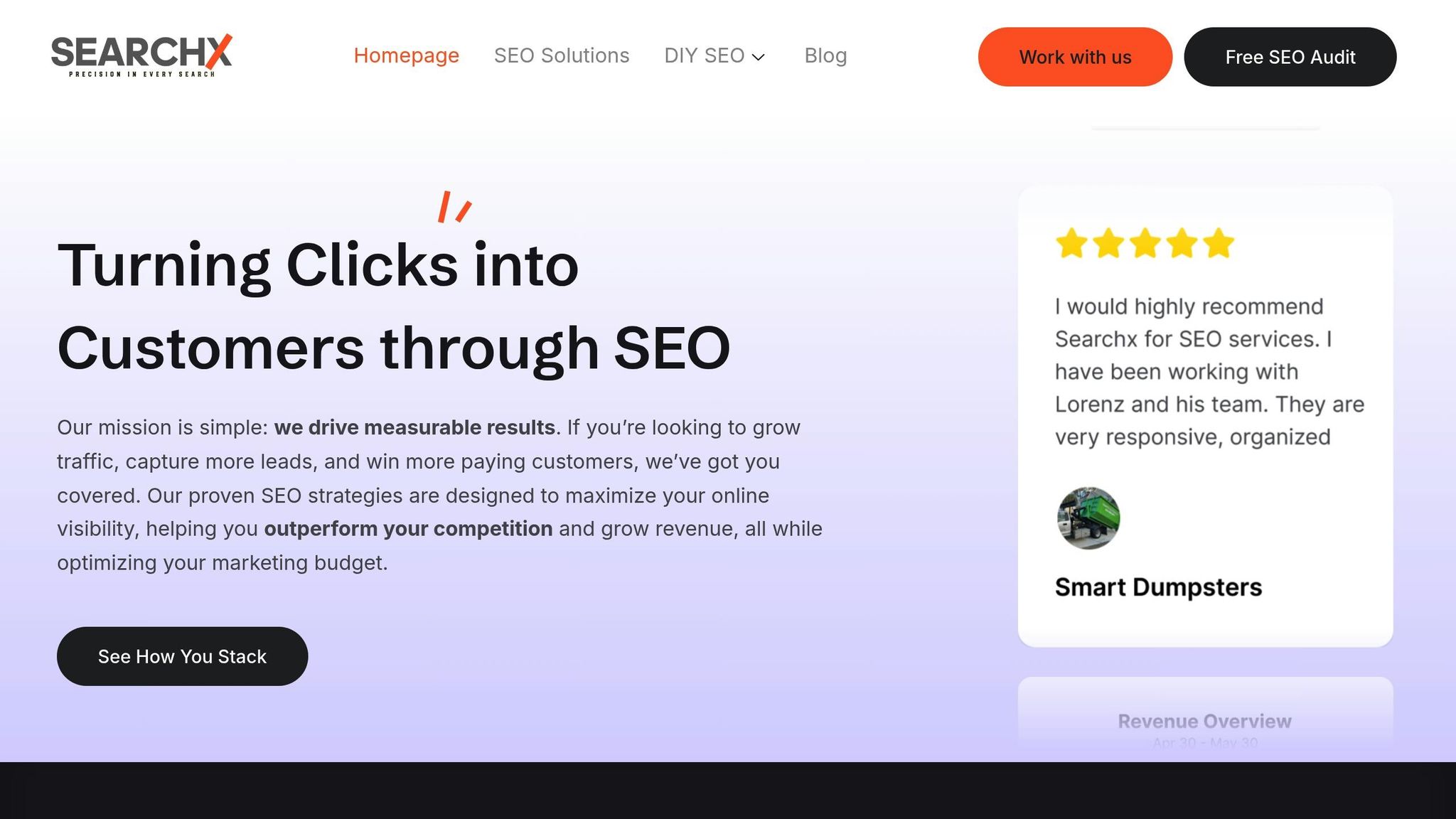User experience (UX) metrics like bounce rate, time on page, click-through rate (CTR), and pages per session directly impact SEO rankings. Search engines use these metrics to evaluate if your site meets user needs and provides a good experience.
- Bounce Rate: High rates suggest irrelevant content; low rates indicate user engagement.
- Time on Page: Longer time means engaging, useful content.
- CTR: A higher CTR reflects appealing titles and descriptions.
- Pages per Session: More pages visited show effective navigation and content flow.
To improve these metrics:
- Align content with user intent.
- Optimize site speed and mobile performance.
- Use clear titles, meta descriptions, and internal links.
UX: Dwell Time, Bounce Rate, Pogo Sticking, CTR
UX Metrics and Their SEO Effects
Search engines assess site quality by analyzing key user experience (UX) metrics that reflect visitor behavior. Let’s break down how bounce rate, time on page, click-through rate (CTR), and pages per session impact SEO.
Bounce Rate
A high bounce rate often suggests that your content doesn’t align with what users are looking for. On the other hand, a low bounce rate indicates that users find your content relevant and are engaging further with your site.
Time on Page
The longer visitors stay on a page, the more it signals that the content is engaging and meets their needs. This can positively impact your search rankings.
Click-Through Rate (CTR)
CTR measures how often users click on your search results. It reflects how appealing and relevant your title tags and meta descriptions are. To improve CTR, focus on:
- Title Tags: Write attention-grabbing, keyword-focused titles that clearly represent your content.
- Meta Descriptions: Create concise, action-driven descriptions that encourage clicks.
- Schema Markup: Use structured data to make your listings stand out in search results.
Pages per Session
This metric shows how well your website encourages visitors to explore multiple pages. A higher number of pages per session suggests effective navigation and internal linking. Improve this by refining your site structure, optimizing internal links, and ensuring fast load times.
Improving one metric, like content relevance, can have a ripple effect – boosting bounce rate, time on page, and pages per session. Together, these metrics strengthen your overall SEO performance.
sbb-itb-880d5b6
Enhancing SEO with SearchX: The Role of User Experience MetricsSearchX

SearchX takes a focused approach to improving UX metrics in SEO, tailoring their strategies to address specific indicators. By using a data-driven process, they work to enhance user experience through targeted actions and continuous monitoring.
Reducing Bounce Rates
SearchX tackles high bounce rates by making precise content adjustments. Their technical SEO audits uncover problems like slow loading speeds and poor mobile performance. Fixing these issues sets the stage for better user engagement.
Boosting Time on Page
To keep users on a site longer, SearchX employs strategies aimed at increasing engagement. These include:
- Crafting detailed, relevant content that aligns with user search intent
- Structuring pages for easier readability
- Using internal links to guide users to related content
- Prioritizing fast load times through technical improvements
These efforts work together to encourage users to explore more of the site.
Improving Click-Through Rates (CTR)
SearchX uses proven methods to enhance CTR, focusing on key elements like:
| Element | Strategy | UX Impact |
|---|---|---|
| Title Tags | Writing keyword-rich, attention-grabbing headlines | Better search visibility |
| Meta Descriptions | Crafting benefit-focused, action-driven snippets | Higher user engagement |
| Schema Markup | Adding structured data for richer SERP displays | Increased click-through rates |
| Content Structure | Organizing with clear hierarchy and formatting | Easier navigation and understanding |
With a 4.95-star rating from 45 Google reviews, clients often highlight noticeable improvements in both UX metrics and SEO performance.
Tracking Performance
SearchX offers custom dashboards for detailed performance monitoring. These tools help businesses:
- Observe user behavior in real-time
- Spot emerging trends
- Measure the impact of optimizations
- Make quick adjustments to strategies
"We drive measurable results" [1] by focusing on metrics that support business growth and revenue.
SearchX emphasizes the link between better UX metrics and tangible business outcomes. Their data-driven focus ensures that optimization efforts lead to real, measurable improvements in both user experience and search engine rankings.
Benefits and Limitations
SearchX’s approach to optimizing UX metrics offers a mix of advantages and challenges worth considering. Understanding these factors highlights the connection between user experience metrics and long-term SEO success.
| Benefits | Limitations |
|---|---|
| Real-time dashboards for monitoring and transparent reporting | Implementation timelines depend on site complexity |
| Customized SEO strategies tailored to your team | Market competition and industry trends can impact results |
The real-time dashboards provide a clear view of UX improvements, allowing for timely adjustments to meet growth goals. On the other hand, implementation timelines can vary significantly depending on the complexity of your website, and external factors like competition in your industry may influence the results.
These considerations help illustrate how improving UX can play a key role in boosting overall SEO performance.
The Connection Between UX Metrics and SEO
User behavior signals have a direct impact on search rankings, making the connection between UX metrics and SEO performance undeniable. To improve these metrics, you need a structured approach supported by reliable tools and expertise.
SearchX offers tools that transform better UX into improved SEO rankings. Their approach shows how refining UX can drive measurable SEO benefits.
If you’re aiming to use UX metrics to boost your SEO, here are some strategies to consider:
- Track Core UX Metrics: Use analytics tools to monitor bounce rates, time on page, and click-through rates.
- Focus on Technical SEO: Optimize your site to meet current technical standards, ensuring a smooth user experience.
- Match Content to Search Intent: Adjust your content to align with what users are searching for and expecting.
Achieving long-term SEO success means finding the right balance between technical updates and continuous UX improvements. By combining data insights with user-focused changes, you can create a cycle of better experiences and stronger search rankings.







